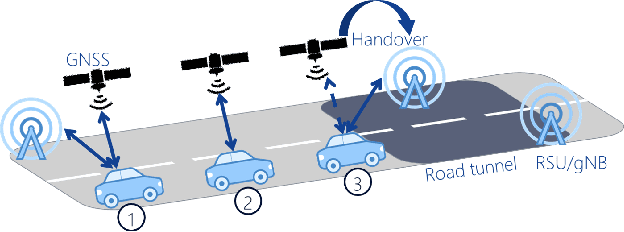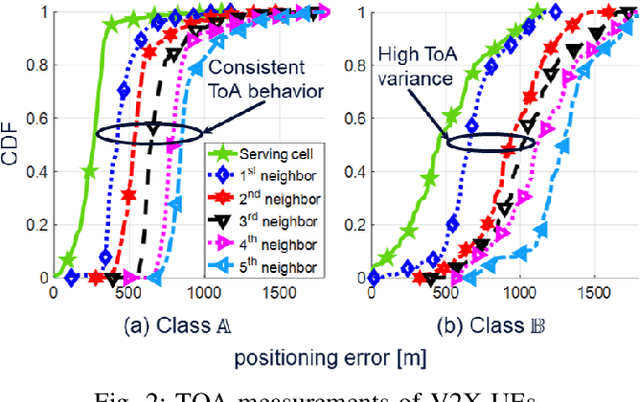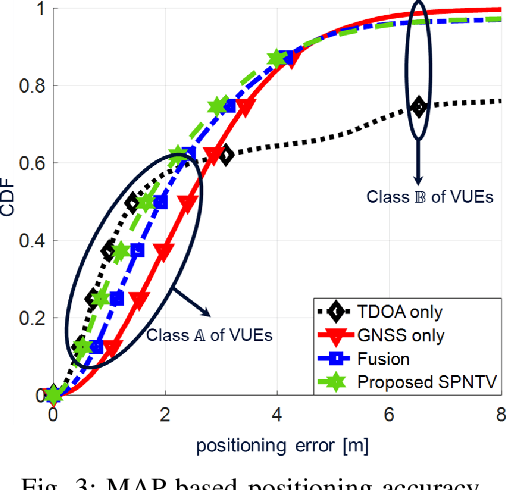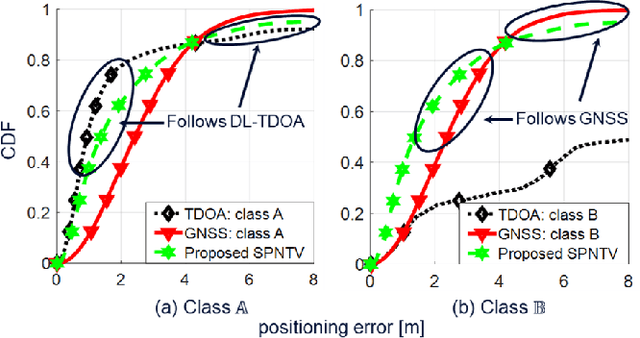Dynamic Selective Positioning for High-Precision Accuracy in 5G NR V2X Networks
Paper and Code
Feb 20, 2021



The capability to achieve high-precision positioning accuracy has been considered as one of the most critical requirements for vehicle-to-everything (V2X) services in the fifth-generation (5G) cellular networks. The non-line-of-sight (NLOS) connectivity, coverage, reliability requirements, the minimum number of available anchors, and bandwidth limitations are among the main challenges to achieve high accuracy in V2X services. This work provides an overview of the potential solutions to provide the new radio (NR) V2X users (UEs) with high positioning accuracy in the future 3GPP releases. In particular, we propose a novel selective positioning solution to dynamically switch between different positioning technologies to improve the overall positioning accuracy in NR V2X services, taking into account the locations of V2X UEs and the accuracy of the collected measurements. Furthermore, we use high-fidelity system-level simulations to evaluate the performance gains of fusing the positioning measurements from different technologies in NR V2X services. Our numerical results show that the proposed hybridized schemes achieve a positioning error $\boldsymbol{\leq}$ 3 m with $\boldsymbol{\approx}$ 76\% availability compared to $\boldsymbol{\approx}$ 55\% availability when traditional positioning methods are used. The numerical results also reveal a potential gain of $\boldsymbol{\approx}$ 56\% after leveraging the road-side units (RSUs) to improve the tail of the UE's positioning error distribution, i.e., worst-case scenarios, in NR V2X services.
 Add to Chrome
Add to Chrome Add to Firefox
Add to Firefox Add to Edge
Add to Edge